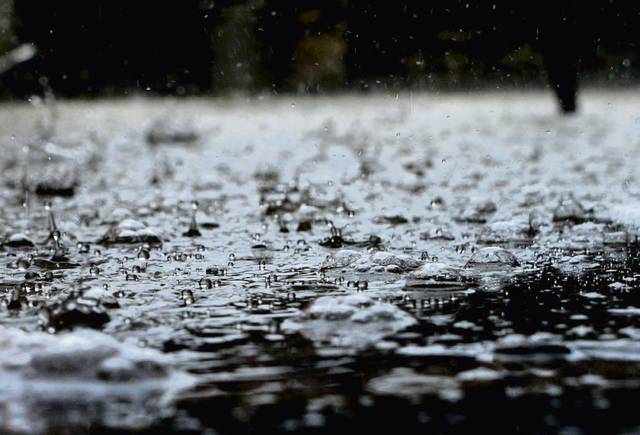https://triblive.com/news/pennsylvania/pennsylvania-climate-report-predicts-wetter-warmer-future-livestock-expansion/
Pennsylvania climate report predicts wetter, warmer future, livestock expansion

A predicted increase in rainfall in Pennsylvania may lead to more flooding and threats to infrastructure in the decades ahead, but some agricultural sectors could experience growth as conditions change, according to a report issued this week by state officials.
Created by the Penn State University Environment and Natural Resources Institute, the Climate Impacts Assessment was released by the state Department of Environmental Protection during Earth Week, when many organizations are focusing on climate change. The report updates earlier versions from 2009, 2013 and 2015.
State officials intend to draw upon the latest report as they prepare a 2021 update of the Pennsylvania Climate Action Plan — which calls for reducing greenhouse gas emissions by 80% at mid-century.
Based on state and federal data, the Climate Impacts report notes Pennsylvania has experienced a roughly 10% increase in average annual rainfall and a nearly 2 degrees Fahrenheit increase in average temperature since 1901.
It’s expected that all areas of the state will continue to get warmer and wetter through the middle of this century. Compared to 2000, average rainfall and extreme precipitation are projected to increase 8% to 12% by 2040-2070, particularly in winter and spring, with the average temperature rising by another 4.9 degrees.
Expected issue: Flash flooding, landslides
Localized intense flooding is likely to be the primary stress on Pennsylvania’s energy, transportation and water infrastructures.
The report notes that large sections of the state’s infrastructure are in areas susceptible to flooding and landslides, with landslides posing a particular hazard in Southwestern Pennsylvania.
Allegheny County, with a total of $116.5 million, ranks 13th among Pennsylvania counties in flood damages documented from 1996 through 2018. Luzerne County leads the list, with damages totaling $373.2 million, while Beaver County ranks 19th, with $57.1 million.
Still, the study notes, overall weather-related property damage in Pennsylvania has decreased during that same period — falling from $867.17 million (in 2018 dollars) in 1996 to $30.65 million in 2018.
Farming projections
Regarding Pennsylvania’s important agriculture industry, the study suggests the state’s poultry inventory in 2050 could be double what it was in 2012, based on comparison with livestock and climate data from counties across the United States where current temperatures match what’s projected for Pennsylvania in the years ahead. Small increases are likely in beef cattle and hog and pig inventories.
Lancaster County, by far, had Pennsylvania’s largest poultry inventory in recent years, with 24.3 million chicken broilers, layers and pullets in 2007-2017. In comparison, Westmoreland County had less than 11,500 chickens during that period and Allegheny County had about 8,600.
Lancaster also led in beef and hogs — with about 157,000 and 342,700, respectively. Westmoreland’s respective totals were about 19,400 and a little more than 1,000; Allegheny’s were about 2,000 and 150, while Armstrong County’s tallies were roughly 11,500 and 850.
Although little change is expected in the state’s total number of dairy cattle, the report notes herds could increase in Pennsylvania’s northwestern counties while decreasing in the southeastern corner.
Farmers react
Pennsylvania Farm Bureau officials weren’t prepared to comment specifically on the 149-page Climate Impacts report.
“Farmers are working to be part of the solution when it comes to climate change,” spokesman Liam Migdail said. “As they work to feed a growing population, farmers are producing more without growing their environmental footprint.”
He cited data from the U.S. Department of Environmental Protection that indicates, since 1990, changes in farming technology and practices have resulted in per-unit decreases in greenhouse gas emissions of nearly 8% for beef, more than 18% for pork, nearly 25% for dairy, nearly 30% for corn and 43% for soybeans.
“There’s strong support, both from climate models and based on fundamental physics, that both total precipitation and extreme precipitation should continue to increase in the coming decades,” said Deborah Klenotic, the DEP’s deputy communications director. “However, the magnitude of the projected increase varies among the models and depends on factors such as whether greenhouse gas emissions continue to increase or reductions are achieved.”
Temperature, rain projections
According to a 2017 report by the National Oceanic and Atmospheric Administration, the highest annual average temperature recorded in Pennsylvania to that point was 51.8 degrees , set in 1998 and tied again in 2012. Statewide annual precipitation has ranged from a low of 28.86 inches in 1930 to a high of 64.04 inches in 2018.
The DEP describes extreme precipitation as rainfall that produces substantially more rain than the average event in that locale. NOAA defines such events as those creating more than 2 inches of precipitation.
Copyright ©2025— Trib Total Media, LLC (TribLIVE.com)
